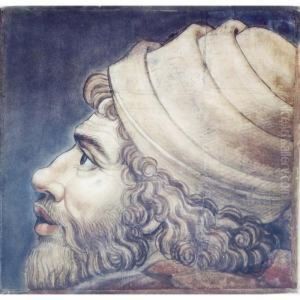Tommaso Vincidor Paintings
Tommaso di Andrea Vincidor, known simply as Tommaso Vincidor, was an Italian painter and architect of the Renaissance period, born in Bologna in 1508. Despite his relatively short life, dying in 1536, Vincidor played a significant role in the dissemination of High Renaissance style outside Italy, particularly in the Low Countries.
Vincidor was a pupil of Raphael, one of the most celebrated artists of the Renaissance, and he worked closely with him in Rome on several important projects. After Raphael's death in 1520, Vincidor took up the mantle of his master's work, completing several of his unfinished projects. This experience not only honed his skills but also deeply influenced his artistic style, which combined the grandeur of Raphael's compositions with his own distinctive flair.
In the 1520s, Vincidor moved to the Netherlands, where he was commissioned by Cardinal Egidio de Viterbo to work on the decoration of the Egidiana chapel in the church of Santa Maria in Trastevere, Rome. His move was also motivated by the commission to work on the tapestry designs for the Vatican, a project initiated by Raphael. Vincidor's work in the Netherlands was crucial in introducing Italian Renaissance art and architectural principles to Northern Europe. He worked in Antwerp, a burgeoning center of art and commerce, where he became a pivotal figure among local artists, influencing the development of the Antwerp Mannerism style.
Among his notable contributions was the design of tapestries for the Vatican, which were based on cartoons by Raphael. These works are considered some of the finest examples of Renaissance tapestry art and highlight Vincidor's skill in adapting and interpreting Raphael's designs. Furthermore, his architectural works, though less documented, contributed to the spread of Renaissance architectural ideals in the Low Countries.
Tommaso Vincidor's legacy is that of an artist who bridged Italian Renaissance art with the Northern Renaissance, adapting and spreading the ideas of one of the greatest masters of the period, Raphael, beyond the borders of Italy. His death in Breda, Netherlands, in 1536, marked the end of a career that, though brief, had a lasting impact on the Renaissance art movement in Northern Europe.
